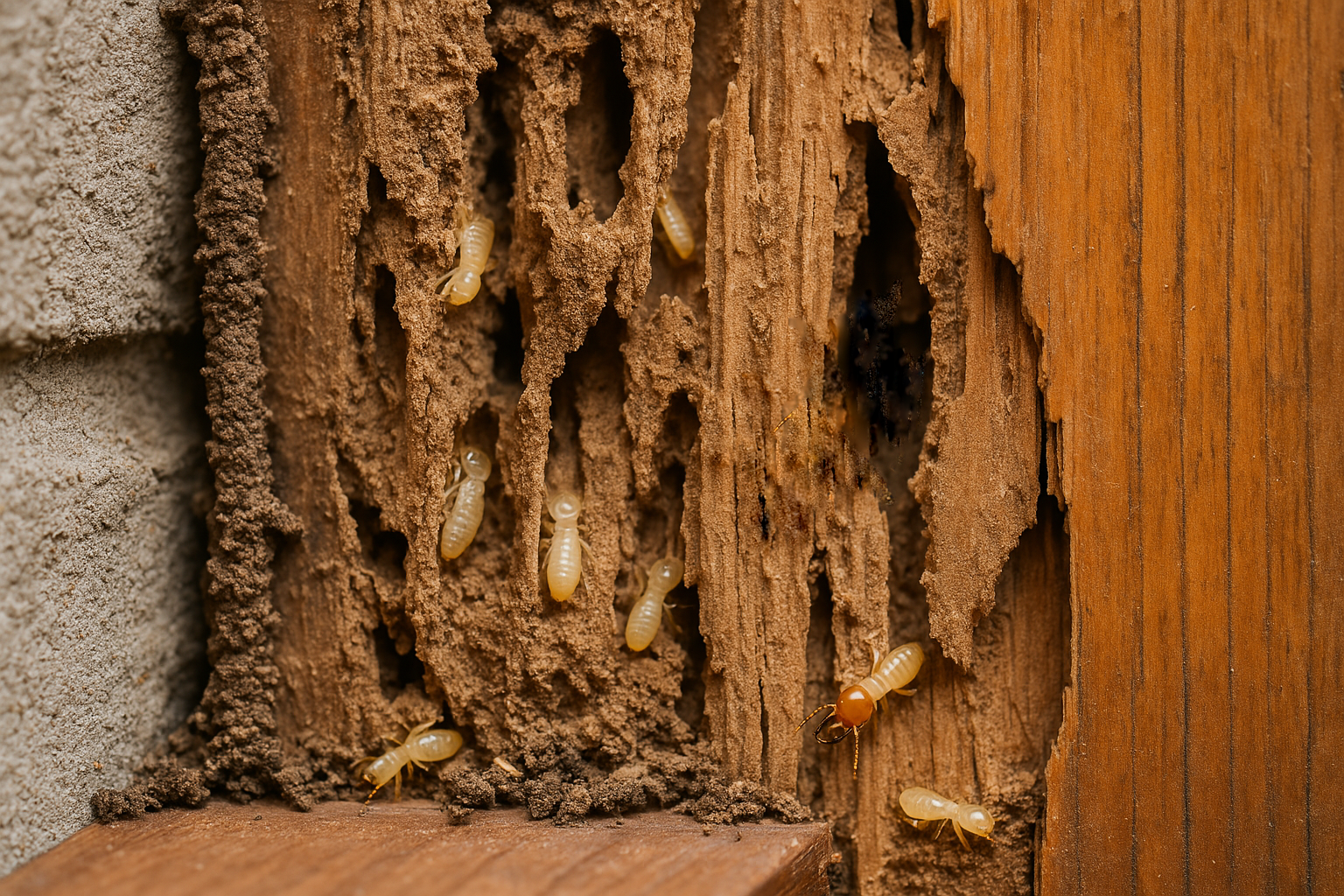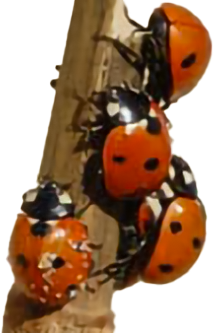
But if you see big, black ants indoors, it could be a problem.
Seeing flying ants suddenly appear in your home can feel like something out of a sci-fi movie — swarms of winged insects emerging from walls, windows, or baseboards. It’s unsettling, no doubt. But before you assume it’s a sign of the end times, take a deep breath: flying ants are a normal part of ant behavior during mating season.
That said, not all flying ants are created equal. In Minnesota, the most concerning are carpenter ants — large, black ants that can cause real damage if they’re nesting in your home. If you’re seeing big, winged ants indoors it may be time to take a closer look.
In this article, we’ll help you identify flying black ants, explain what their presence may indicate, and show you when it’s time to call a professional pest control expert to prevent structural damage and unwanted guests.
“Why are there flying ants in my house?”
It’s a common question we hear — and the answer is both simple and potentially serious.
Flying ants are reproductive members of an ant colony, known as “alates.” They emerge in large numbers typically during warm, humid days in spring or early summer as part of a mating ritual known as a nuptial flight.
While a few flying ants outside may be no cause for concern, seeing them indoors can be the sign of a more serious issue: a mature ant nest nearby — or worse, inside your home. If flying ants are appearing around windows, baseboards, or in lower levels of your home, it may be the first visible sign of a hidden ant infestation.
Common Types of Black Ants You Might See
If you’ve spotted black ants with wings in or around your home, you’re likely dealing with one of several common ant species found in Minnesota. To properly address the problem, it’s important to identify black ants accurately — some are harmless nuisances, while others can cause serious structural damage.
Carpenter Ants (Camponotus spp.)
One of the most concerning types of ants in Minnesota is the carpenter ant. These ants are noticeably larger than other species — often measuring between 6 and 13 mm — and may appear solid black or black with reddish tones. They have smooth, evenly rounded bodies and elbowed antennae, which helps distinguish them from termites.
Carpenter ants are known for establishing nests in moist or decaying wood, often in wall voids, attics, or window frames. Their presence indoors — especially when winged ants are seen swarming — may signal a mature colony.
If you suspect carpenter ants, professional identification is key, as they’re one of the few species that can cause structural damage over time. Learn more about carpenter ants.
Pavement Ants (Tetramorium immigrans)
Slightly smaller than odorous house ants, pavement ants typically measure around 2.5 to 4 mm long. They get their name from their habit of nesting in cracks in sidewalks, driveways, and building foundations. Indoors, they’re often found near heat sources or under floors and baseboards. Pavement ants are a nuisance species known for forming large colonies and invading kitchens in search of sugary or greasy foods. Learn more about pavement ants.
Odorous House Ants (Tapinoma sessile)
These ants give off a distinct rotten coconut or blue cheese smell when crushed. They prefer nesting in moist areas and are commonly found trailing along sinks, food storage areas, and bathrooms. Their attraction to sugary foods often leads to kitchen invasions. Learn more about odorous house ants.
Correctly identifying which ant species you’re seeing helps determine the right treatment — and whether there’s cause for concern.
How Carpenter Ants Cause Damage — and What to Watch For
Carpenter ants, particularly the black carpenter ant (Camponotus pennsylvanicus), are a significant concern for Minnesota homeowners. Unlike termites, carpenter ants don’t eat wood. Instead, they chew through it to create smooth-walled tunnels, weakening your home’s structural integrity over time.
🛠️ How They Damage Your Home
Carpenter ants prefer moist, decaying wood, often found in areas like window frames, roof eaves, decks, and porches. They carve out smooth tunnels, known as galleries, within the wood to establish their nests. Over time, this excavation can weaken the structural integrity of your home, especially if the infestation goes unnoticed for years.
🔍 Signs of Carpenter Ant Activity
Be vigilant for these indicators of a carpenter ant infestation:
- Sawdust-Like Debris: As carpenter ants excavate wood, they discard the debris, which resembles coarse sawdust. You might find frass near baseboards, window sills, or in crawl spaces.
- Hollow-Sounding Wood: Tapping on wood surfaces and hearing a hollow sound can indicate internal damage caused by nesting carpenter ants.
- Rustling Noises: At night, when the house is quiet, you may hear faint rustling sounds from within walls or ceilings, a sign of active carpenter ant colonies.
- Winged Ants Indoors: The presence of winged carpenter ants inside your home, especially near windows, suggests a mature colony nearby.
- Structural Issues: Advanced infestations can lead to warped walls, sagging floors, or doors and windows that no longer close properly due to compromised structural wood.
🕵️ Locating the Nest
Carpenter ants often establish satellite nests inside homes, separate from their main colony, which is typically located outdoors. To locate these nests:
- Follow Ant Trails: Carpenter ants are most active at night. Observing their movement can lead you to the nest.
- Use Bait: Placing protein-rich bait like a tuna can attract ants, making it easier to trace their path back to the nest.
- Inspect Moist Areas: Focus on areas with moisture issues, such as around plumbing, basements, or areas with water damage, as these are prime nesting sites.
If you suspect a carpenter ant infestation, it’s crucial to act promptly. Early detection and professional intervention can prevent extensive damage and costly repairs.
Are Flying Ants Dangerous?
It’s natural to wonder, “Are flying ants dangerous?” — especially when you suddenly see a swarm of them inside your home. The good news is that flying ants themselves aren’t aggressive and don’t pose a direct threat to people or pets. They don’t sting like wasps, and most species don’t bite.
However, their presence can be a warning sign of a bigger issue.
Even more concerning is spotting flying ants repeatedly or during the winter months, when they should be dormant. This may suggest the nest is inside a heated space, such as within your walls or attic — a potential sign of a growing carpenter ant infestation.
While flying ants may not be dangerous themselves, ignoring them could allow hidden damage to go unchecked. That’s why correct identification and timely response are so important.
What You Can Do to Prevent Flying Ants
While a few flying ants near your porch light in summer may be harmless, repeated sightings indoors can indicate a much larger problem. Fortunately, preventing ant infestations is possible with a combination of vigilance and simple home maintenance.
Here are some proactive steps you can take:
- Seal cracks and gaps: Inspect the foundation, windows, doors, and utility lines. Use caulk or weather stripping to close off potential entry points.
- Eliminate moisture sources: Carpenter ants are especially drawn to damp wood. Repair leaky pipes, improve ventilation in crawlspaces, and address water-damaged areas promptly.
- Store food in sealed containers: Keep pet food, snacks, and pantry items in airtight containers. Clean up crumbs and spills promptly.
- Trim vegetation near your home: Shrubs, branches, and stacked firewood can serve as bridges for ants to enter. Maintain a clear buffer zone around your exterior.
- Minimize exterior lights: Since flying ants are attracted to light, minimize or modify lighting near entry points to reduce their presence indoors.
Taking these steps can dramatically reduce your risk of an infestation — but even the most careful homeowners sometimes need backup. For expert help with ant control in Minnesota, Adam’s Pest Control offers fast, professional solutions backed by decades of local experience.
When to Call a Professional
If you’ve had repeated sightings of flying ants, found winged ants indoors, or noticed signs of wood damage like frass or hollow-sounding walls, it’s time to consider a professional ant extermination service.
DIY fixes may seem effective at first, but without eliminating the nest, the problem usually returns.
A licensed pest control expert can accurately identify the species, locate nesting sites, and apply targeted treatments that eliminate the entire colony — not just the ants you can see.
At Adam’s Pest Control, we’ve helped thousands of Minnesota homeowners solve persistent black ant problems quickly and effectively. Our technicians are trained to detect the early warning signs and provide long-term prevention strategies tailored to your home.
When it comes to ants, it’s better to act early than to wait and hope they go away.
Conclusion
Seeing a few flying black ants around your home isn’t always a reason to panic — but it could be a sign of a more serious problem, especially if they keep coming back or appear indoors during colder months. Carpenter ants, in particular, can quietly damage wood structures long before you notice the effects.
The best way to protect your home is through early detection and expert help.
If you’re unsure what kind of ants you’re seeing or want to protect your home from damage, contact Adam’s Pest Control for a free estimate.
Our trusted ant control services are available across Minnesota and backed by decades of experience.



